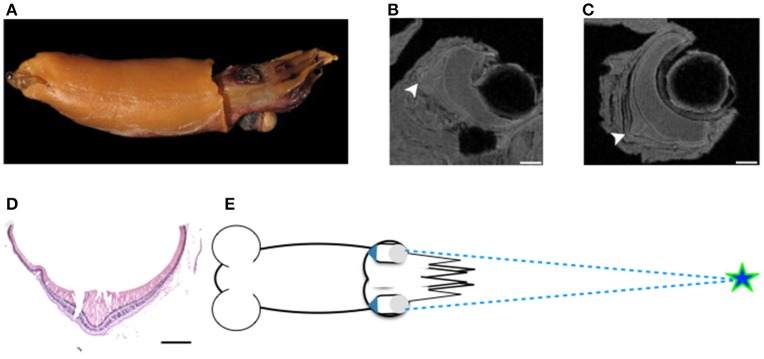Figure 5.
Tubular eyes and fovea of B. abyssicola and potential function. The fovea and tubular eyes could maintain binocular stereopsis and preserve both resolution and sensitivity over a restricted frontal area where is critical for searching prey or mates. (A–D) The fovea of B. abyssicola. Arrows indicate the fovea. (D) A histological section of the fovea which the longest photoreceptor is c.a. 500 μm. (E) Illustration of potential function using the tubular eyes in detecting bioluminescent point sources. Scale bar: 500 μm.

